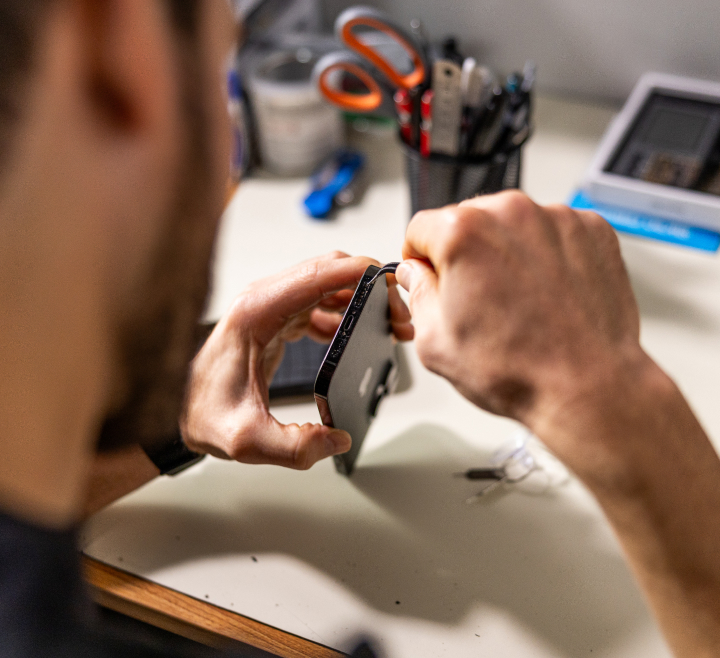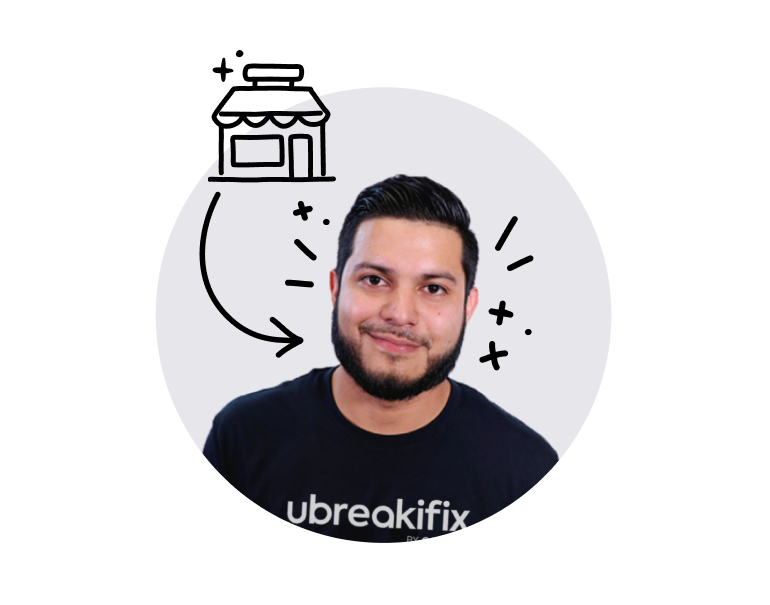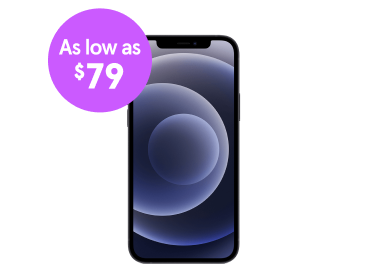
Trusted to fix any iPhone
As an Independent Repair Provider for Apple®, our trusted experts are trained to get your broken device back up and running fast. And we’ll use Apple parts, tools, and equipment.
Our iPhone 15 repairs are simple

2. Get quality repairs
We’ll run a free diagnostic on your iPhone 15 and provide fast, convenient repairs.

3. Sit back and relax
We’ll contact you when the repair is done so you can enjoy your iPhone 15.

Quality repairs, right in your neighborhood
Trusted professionals. 700+ locations and thousands of experts.
Speedy service. Most repairs done as soon as same day.
Free diagnostics. Not sure what’s wrong? Let us take a look.
Low prices. We’ll beat any local competitor’s price.
1-year limited warranty. It comes standard with most of our repairs.
Your iPhone 15 is in good hands
Don’t leave important repairs to just anyone. For over 25 years, Asurion has repaired the devices people rely on most. And we have the reviews to prove it.
iPhone 15 repairs from uBreakiFix by Asurion
Dealing with a broken iPhone 15? Get it fixed quickly by a skilled expert at any of our 700+ uBreakiFix® by Asurion stores today. Whatever your issue is, our experts have the tools and training to fix it. And with our 1-year limited warranty, we stand by our work, even long after you leave. We also offer free diagnostics and repair estimates for your iPhone 15 up front—you won't be surprised with extra fees on your bill at our store. Ready to get started? Walk in or book an appointment at one of our store locations, and our experts will get your device back up and running. Book your repair today.
How much does an iPhone 15 repair cost?
Get an iPhone 15 repair that’s quick, economic, and completed to the exact original manufacturer’s standards. Plus we'll beat any local competitor’s regularly published price for the same iPhone 15 repair by $5, so you get the best bang for your buck.* Got a busted speaker? Defective charging port? Shattered screen? Our experts have you covered, for less.
How long do your iPhone 15 repairs take?
If your iPhone 14 repair is simple, like a software update, our capable repair experts could have it complete by the end of the day. At uBreakiFix by Asurion, we offer trustworthy repair services to help get your iPhone 15 up and running fast. And with a 1-year limited warranty provided with our repair services, you can rest easy even long after your leave when you trust our techs with your repair. If you've been searching the web for a “fast iPhone 15 repair near me,” find what you need at your local uBreakiFix by Asurion. Walk in to your local store to get your device fixed today.
What sets your iPhone 15 repairs apart?
At uBreakiFix by Asurion, we are committed to putting the needs of our customers first by guaranteeing our experts are prepared for anything, which means going through an intensive training process. With 14 million+ repairs completed to date, we offer a 1-year limited warranty on services completed by our techs, so we can be there for you and your device long after you walk out of our store.
We're trusted by big names in tech, offering authorized repair services for Samsung® and Google®. We're also a certified Apple® Independent Repair Provider, prepared to carry out high-quality repairs using parts and processes made to the original manufacturers' standards. Whatever your problem, our skilled professionals have the knowledge to repair your technology swiftly.
We fix most iPhone 15 issues—fast
Our most popular iPhone 15 services
We make iPhone 15 repairs easy

Stop by your local store, and one of our experts will fix your iPhone 15 with or without an appointment. Can’t come in? We have mobile repair vans that’ll come to you in select cities.

The team at your local store can repair your iPhone 15 and resolve your tech problems too. Not sure what’s wrong with your device? We’ll diagnose it for free.

When customers visit our store, they receive fast, affordable tech repairs—many completed as soon as the same day. And most of those repairs come with a 1-year limited warranty.
What else can we fix for you?
The Asurion® trademarks and logos and the uBreakiFix® trademarks and logos are the property of Asurion, LLC and uBreakiFix Co. respectively. All rights reserved. All other trademarks are the property of their respective owners. Asurion and uBreakiFix are not affiliated with, sponsored by, or endorsed by any of the respective owners of the other trademarks appearing herein.
Apple, iPhone and iPad are trademarks of Apple, Inc. All other trademarks are the property of their respective owners. Asurion is not affiliated with, sponsored by, or endorsed by Apple or any of the respective owners of the other trademarks appearing herein.























